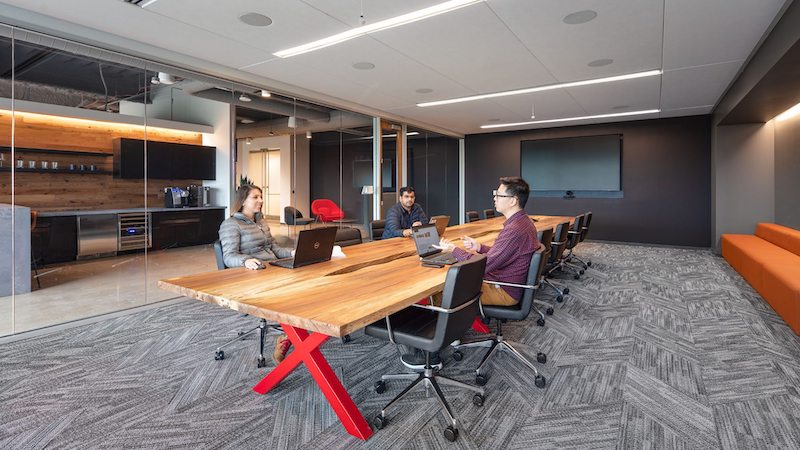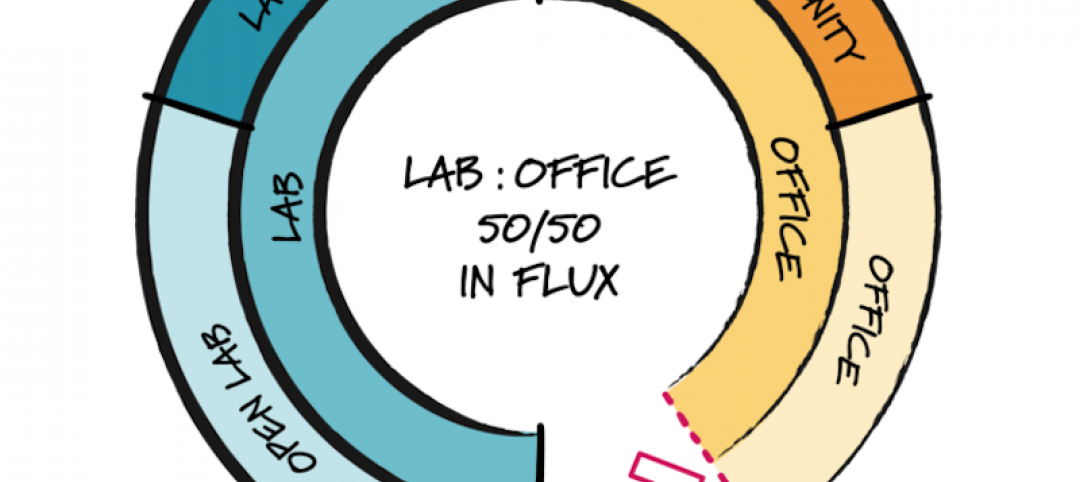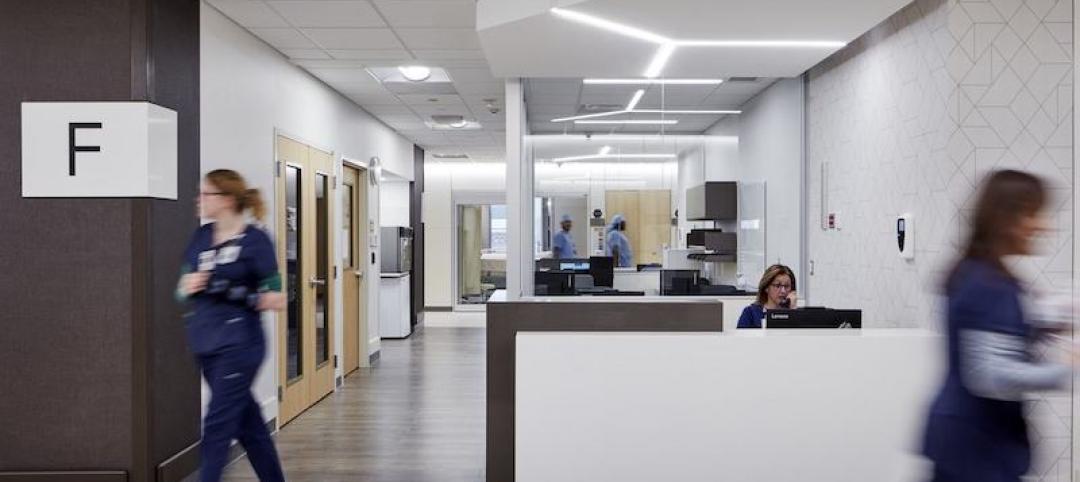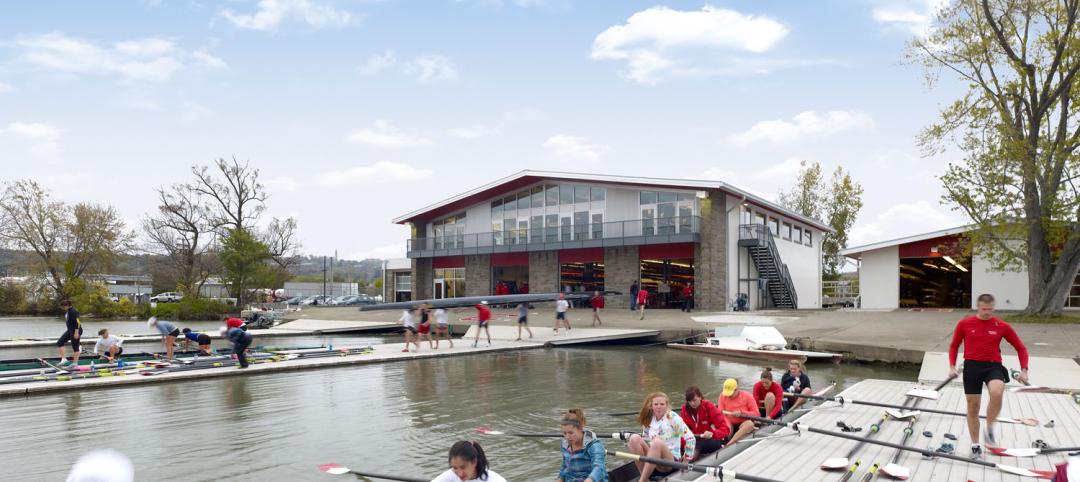In workplace design, change management is the process of equipping leadership (first) and then supporting staff (second) in a company to move from their current state to their new future state. Usually the purpose of change management is so that employees can embrace the change successfully and therefore thrive while driving better organizational outcomes, which impact the company’s bottom line and wellness in a positive way.
Let’s be honest, our world has really thrown us for a loop, impacting our ability to do our work—both functionally and emotionally. We are now at a significant paradigm shift in what we would consider “business as usual.”
In times of unexpected change, our ability to prepare employees psychologically in advance of change is limited. In such instances, leadership can still support the nimbleness of an organization’s staff. This is where we need to be real with each other. There are some unknowns, expectations, and fear as we move between working from home to phases of returning to the office. As workplace designers, how can we continue to put on our empathetic lens to create the workspace that supports people returning to the office.
From my vantage point, working for a nationally recognized A+E firm with over 850 employees, my perspective may differ than yours, but I feel there are some good lessons learned that are applicable to any organization. This is Part 1 of a 2-part blog on change management. In my next blog I will share some additional tips on how we can continue to make a profound impact in our workplace environments.
What We Know Now

During this work from home (WFH) period, everyone has learned new strategies to thrive. Here’s what we have learned, and what we can use in navigating change.
1. Our ability to adjust and be nimble is paramount to the future success of the workplace, especially with technology. Our IT support is important here. They tend to become like family because they are the ones you are calling at odd hours when something is not functioning correctly.
2. We can measure productivity in a different way depending on firm size. A large national firm can “staff share” and work across offices and disciplines, while a small office used to wearing several hats should support constant virtual communication to maintain nimbleness.
3. The ability to provide seamless service and deliverables to your clients and customers is critical. It keeps projects moving forward and provides a sense of stability for your staff. Your leadership has set you up to be productive and effective. That is still the goal, rely on each other to find new ways to be productive and happy.
4. There is a “humanizing” factor that can create a stronger bond between clients, customers, and consultants. From active children to pets and views into our personal lives, virtual meetings can create bonds that will carry beyond the current situation.
WFH Guidelines

As we continue to work from home in varying ways, consider these change management strategies that address the functional, safety, and emotional needs of all:
1. Provide immediate and succinct response from leadership to the staff. CEO/COO + HR + IT become vital to the succinct messaging and seamless transition of things—show leadership and consensus and, in times like these, grace.
2. Provide workplace from home and IT support—do staff need other equipment or ergonomic capabilities? How can organizations reduce stress/burnout from home?
3. Provide emotional support—virtual check-ins, group lunches, HR/benefits Q&A. “When managers ignore emotional culture, they’re glossing over a vital part of what makes people—and organizations—tick,” Harvard Business Review, January/February 2016.
4. Provide empathy in leadership and management—be mindful that each employee situation is unique and be authentic in how you interact through technology/virtual meetings. Direct managers with closer relationships can help maintain the consistent message from leadership. Frequent, succinct communication is better than less.
Returning to the Office

As you re-enter the workplace, assess what your staff has taken from shelter-in-place. Can you react to change—even unexpected change—in a way that is empathetic and compassionate?
Remember that every day and every interaction count. In the moments of change, people often take things personally. But if you can encourage a culture where it becomes more about the collective, and the collective value of the people, then you can provide opportunities for all to feel a strong sense of purpose.
It will not be the old “business as usual” when people phase back into the office. People will be more resilient, appreciative, and excited to come back into the physical workspace if . . .
1. Your workplace provided a strong sense of place prior to the pandemic.
2. You transition back into the office cautiously, with safe measures such as cleaning and testing.
3. Provide emotional transition support, when needed.
Looking Forward
Working from home has proven some resiliency and ability to be flexible, choice of workplace. Yet our connections are the strongest when in person, so we can be sure our culture will beat the odds that some have thrown against human kind. I don’t know about you, but I will want to eat at all the local restaurants the first opportunity I get and sit with colleagues for a casual conversation.
More from Author
HGA Insights Blog | Apr 8, 2021
Designing lab workspaces in the time of COVID
There are two converging trends that will shape this ratio of lab-to-office in 2021.
HGA Insights Blog | Feb 8, 2021
Prioritizing staff wellbeing: A call to action
Recent studies reveal that more than 50 percent of physicians and one-third of nurses experience burnout, HGA researchers have the details—and the evidence-based design interventions.
HGA Insights Blog | Oct 22, 2020
Envisioning libraries as community hubs
In the following, HGA Vice President and Senior Designer Jane Dedering discusses her passion for libraries, community engagement, and how the current pandemic will influence libraries moving forward.
HGA Insights Blog | Aug 6, 2020
Museums emerging from the pandemic: Hands-on learning
HGA Arts & Culture experts weigh in on the future of museums in this ongoing series, Museums Emerging from the Pandemic.
HGA Insights Blog | Mar 19, 2020
Technology crucial during COVID-19 social distancing
Technology can help bridge the gap during the Coronavirus pandemic as higher education institutes and corporations are moving to a remote work model.
HGA Insights Blog | Mar 9, 2020
Designing campus buildings through an equity lens
As colleges become more diverse, campus conversation is focusing on how to create equitable environments that welcome all voices.












